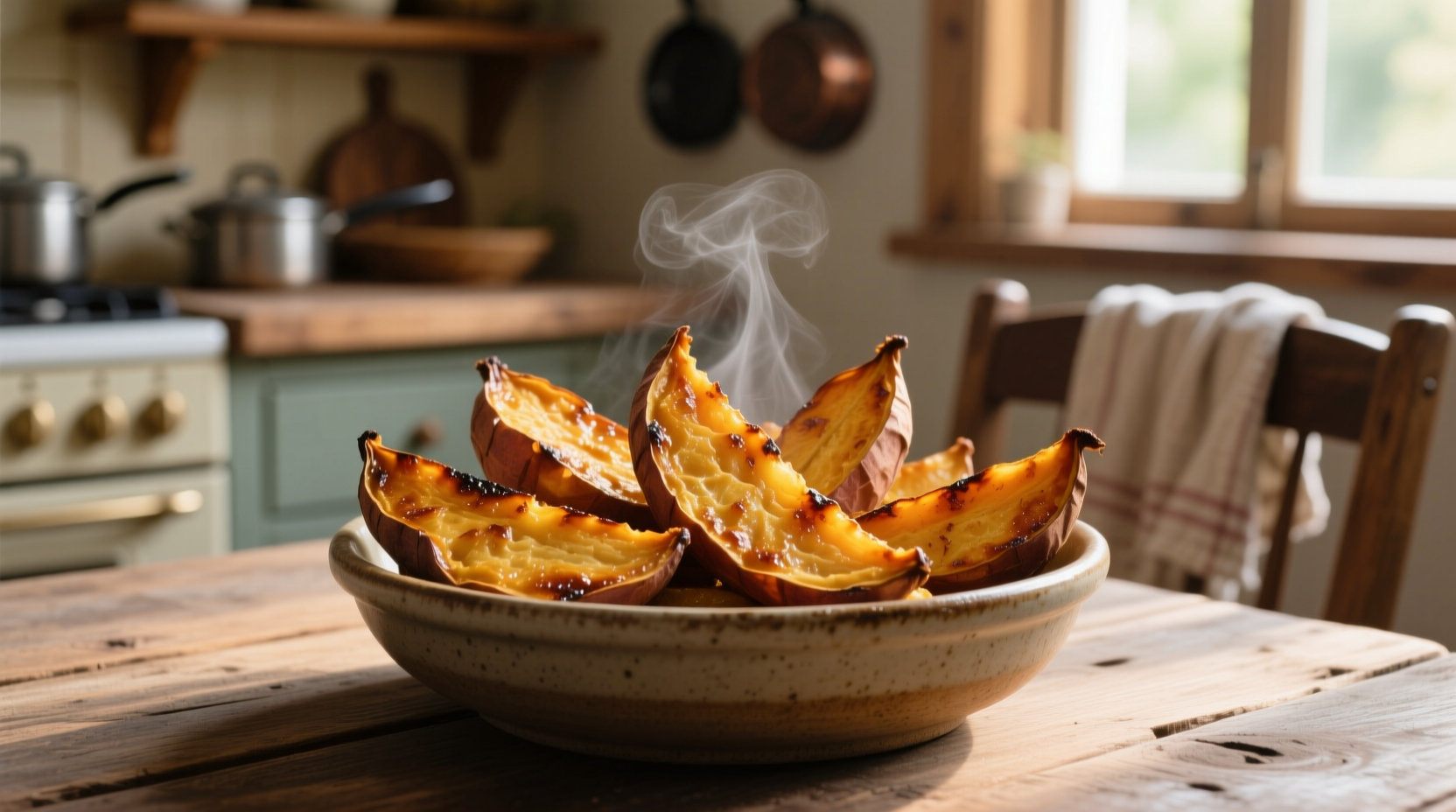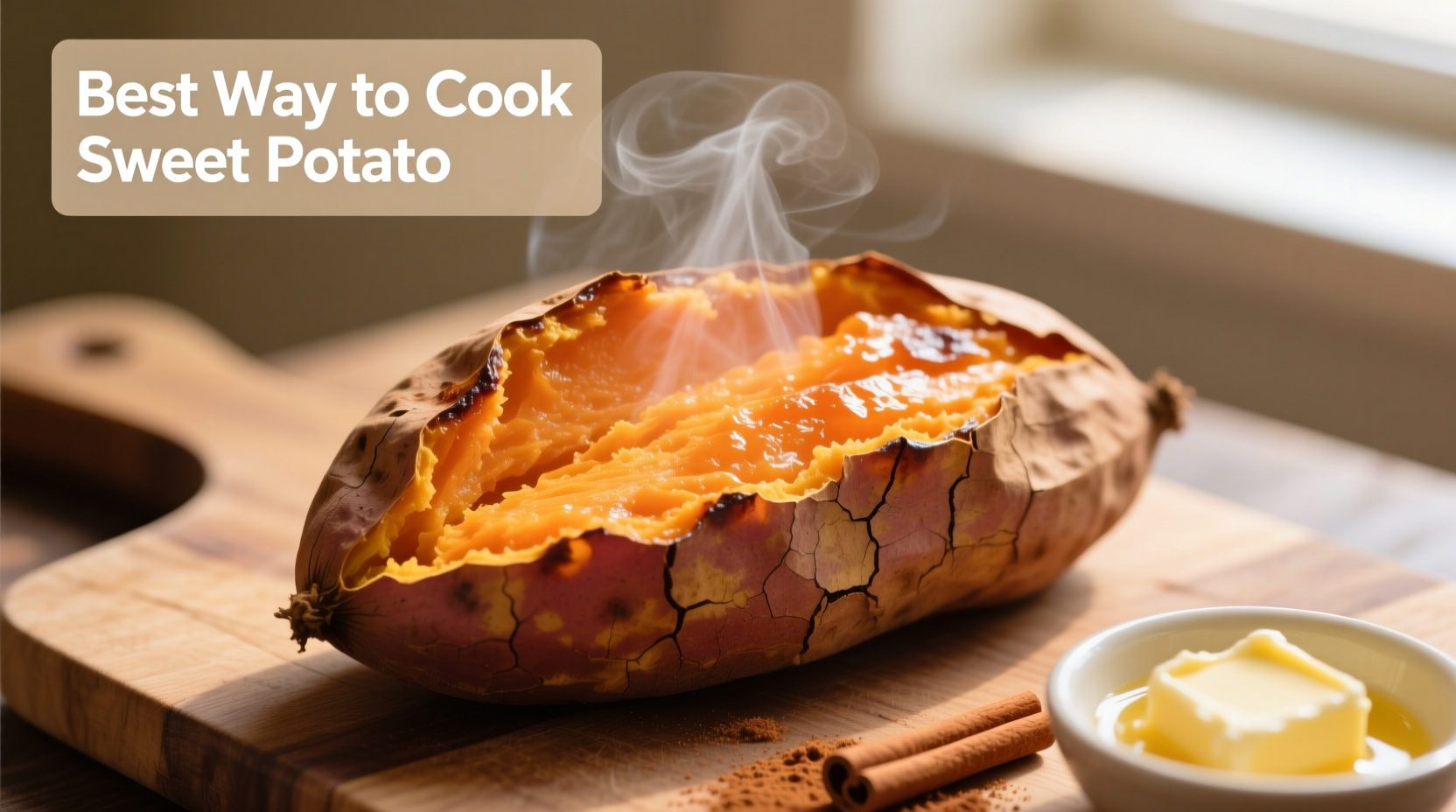The best way to cook sweet potatoes is by roasting them at 400°F (205°C) with a light coating of oil and proper spacing on the baking sheet. This method maximizes natural sweetness through caramelization while preserving nutrients better than boiling, yielding perfectly tender interiors with slightly crispy edges in 35-45 minutes.
Discover why professional chefs and nutrition experts consistently recommend roasting as the superior method for sweet potatoes. Unlike boiling which leaches nutrients into water, or microwaving which creates uneven texture, roasting transforms these humble tubers into culinary stars through the magic of the Maillard reaction and caramelization. Our comprehensive guide reveals the precise techniques that guarantee perfect sweet potatoes every time—whether you're meal prepping, making side dishes, or creating healthy snacks.
Why Roasting Outperforms Other Cooking Methods
Food science explains why roasting sweet potatoes delivers unmatched flavor and texture. When exposed to dry heat above 300°F (149°C), the natural sugars in sweet potatoes undergo caramelization while amino acids trigger the Maillard reaction—creating complex flavor compounds that boiling or steaming simply cannot achieve. According to USDA Food Safety and Inspection Service guidelines, roasting preserves up to 30% more beta-carotene compared to boiling, making it both the tastiest and most nutritious preparation method.
| Cooking Method | Nutrient Retention | Flavor Development | Texture Result | Time Required |
|---|---|---|---|---|
| Roasting (400°F) | 90-95% | Excellent caramelization | Tender inside, slightly crispy outside | 35-45 minutes |
| Boiling | 60-70% | Muted, watered-down | Uniformly soft, sometimes mushy | 20-30 minutes |
| Steaming | 80-85% | Moderate sweetness | Firm but moist | 25-35 minutes |
| Microwaving | 85-90% | Basic sweetness | Can be uneven | 10-15 minutes |
Professional Roasting Technique: Step-by-Step
Follow these chef-approved steps for perfect roasted sweet potatoes every time:
- Prep properly: Wash and scrub sweet potatoes thoroughly. Pat completely dry—moisture prevents proper browning. For even cooking, cut into 1-inch uniform pieces (larger pieces for softer texture, smaller for crispier results).
- Oil application: Toss with 1-2 teaspoons of high-heat oil (avocado or grapeseed) per pound of sweet potatoes. Avoid olive oil which smokes at roasting temperatures. The oil should coat but not pool—excess oil creates steamed rather than roasted results.
- Seasoning strategy: Add salt after roasting for optimal texture. During cooking, salt draws out moisture which inhibits browning. For flavor variations, add spices like smoked paprika or cinnamon in the last 10 minutes of cooking.
- Perfect roasting conditions: Preheat oven to 400°F (205°C). Arrange potatoes in a single layer on a parchment-lined baking sheet with space between pieces. Crowding causes steaming instead of roasting. For extra crispiness, place on a preheated baking sheet.
- Timing precision: Roast 35-45 minutes, flipping halfway through. Test for doneness by inserting a knife—it should meet no resistance. For caramelized edges, extend cooking by 5-10 minutes.

Avoid These Common Sweet Potato Mistakes
Even experienced cooks make these critical errors that compromise results:
- Under-seasoning: Sweet potatoes need more salt than you think. Underseasoned sweet potatoes taste bland despite their natural sweetness.
- Overcrowding the pan: This is the #1 mistake. When pieces touch, they steam instead of roast, resulting in soggy texture. Use two baking sheets if necessary.
- Peeling before cooking: The skin contains valuable fiber and nutrients. Roast with skin on for maximum nutrition, then peel after cooking if desired.
- Incorrect temperature: Below 375°F (190°C) won't properly caramelize sugars. Above 425°F (218°C) risks burning before interior cooks through.
Flavor Variations for Every Occasion
Transform your roasted sweet potatoes with these professional chef techniques:
- Savory herb infusion: Toss with fresh rosemary and thyme in the last 10 minutes of cooking. The heat releases essential oils without burning delicate herbs.
- Sweet & spicy: After roasting, drizzle with 1 teaspoon of pure maple syrup and a pinch of cayenne pepper. The residual heat creates a glossy glaze.
- Mediterranean style: Toss finished potatoes with crumbled feta, toasted pine nuts, and a squeeze of fresh lemon juice.
- Meal prep friendly: For weekly meal preparation, roast without seasoning. Store in airtight containers for up to 5 days, then add fresh seasonings when reheating.
Storage and Reheating for Perfect Results
Proper storage maintains texture and flavor for future meals:
- Cool completely before storing to prevent condensation
- Store in airtight containers for up to 5 days in the refrigerator
- Freeze in single layers on baking sheets before transferring to freezer bags (keeps pieces from sticking together)
- Reheat in a 375°F (190°C) oven for 10-15 minutes for best texture—microwaving makes them soggy
- Add fresh seasoning after reheating for vibrant flavor
When to Choose Alternative Cooking Methods
While roasting is generally superior, specific situations call for different approaches:
- Boiling: Best when making mashed sweet potatoes or purees where uniform texture is essential. Use minimal water and save the nutrient-rich cooking liquid for soups.
- Steaming: Ideal for baby food or when maximum nutrient retention is critical. Steam for 25-30 minutes until fork-tender.
- Air frying: Excellent for quick, crispy results with less oil. Cook at 390°F (199°C) for 18-22 minutes, shaking basket halfway through.
- Slow roasting: For ultra-tender results, roast at 325°F (163°C) for 60-75 minutes. Perfect for holiday meals when oven space is limited.











 浙公网安备
33010002000092号
浙公网安备
33010002000092号 浙B2-20120091-4
浙B2-20120091-4